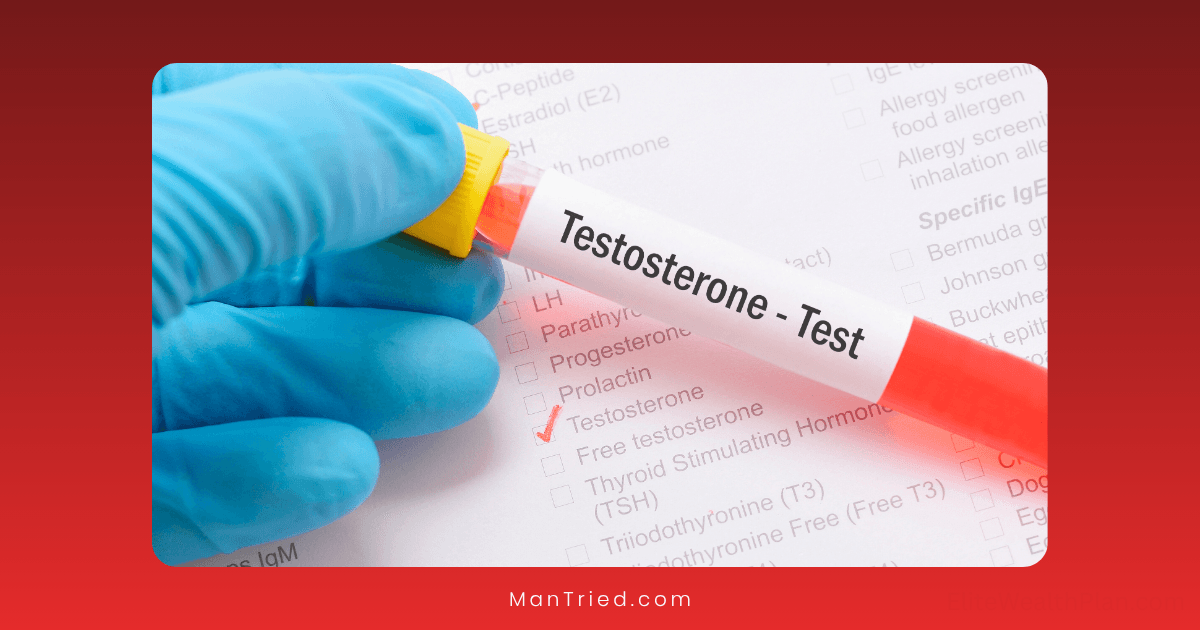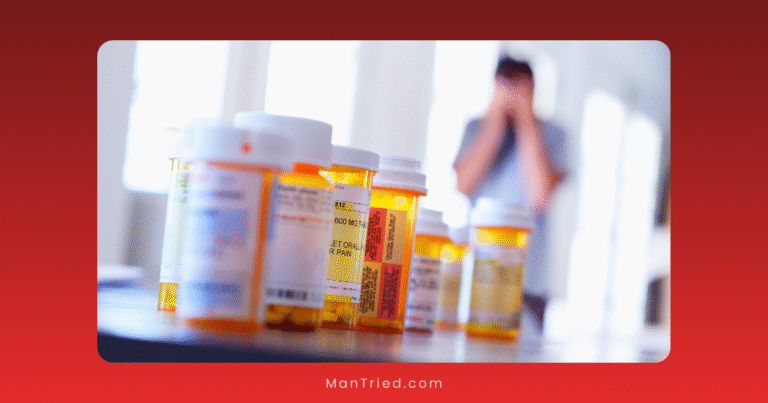TRT Monitoring: What Tests You Need and When

Testosterone replacement therapy (TRT) has helped countless men reclaim their energy, vitality, and quality of life. However, this powerful treatment requires careful monitoring to ensure both safety and effectiveness. If you’ve just started TRT or are considering it, understanding the necessary testing protocols is essential for your long-term health.
“TRT isn’t a ‘set it and forget it’ treatment,” explains Dr. Michael Reynolds, a board-certified urologist specializing in men’s health. “Regular monitoring through appropriate blood work is the difference between a successful therapy that enhances your life and one that potentially leads to complications.”
Surprisingly, research from Vitality Lounge Health indicates that nearly 25% of men prescribed TRT never received baseline testosterone testing, and only about 52% are retested within 12 months after starting therapy. These concerning statistics highlight the importance of being proactive about your TRT monitoring.
This comprehensive guide will walk you through the essential tests needed before and during TRT, explain why each test matters, and outline a typical monitoring schedule to keep your therapy safe and effective.
Pre-Treatment Testing: Establishing Your Baseline
Before beginning TRT, comprehensive baseline testing is crucial not only to confirm that you truly have testosterone deficiency but also to identify any pre-existing conditions that might affect your treatment.
Core Baseline Tests
1. Testosterone Levels
What’s measured: Both total and free testosterone levels.
Why it matters: According to the Cleveland Clinic, you should have at least two morning testosterone tests on separate days to confirm a diagnosis of low testosterone. A single low reading isn’t sufficient for diagnosis.
Target values: While reference ranges vary by laboratory, testosterone deficiency is typically diagnosed when levels fall below 300 ng/dL.
Testing notes: Tests should be performed in the morning (before 10 AM) when testosterone levels naturally peak. Some clinics recommend fasting before the test for more accurate results.
2. Luteinizing Hormone (LH) and Follicle-Stimulating Hormone (FSH)
What’s measured: Pituitary hormones that stimulate testosterone production.
Why it matters: These tests help determine whether your low testosterone is primary (testicular issue) or secondary (pituitary/hypothalamic issue). This distinction can influence treatment approaches and identify underlying health concerns.
Target values: Normal ranges vary by lab but typically fall between 1.5-9.3 IU/L for LH and 1.4-18.1 IU/L for FSH.
3. Complete Blood Count (CBC)
What’s measured: Red and white blood cell counts, hemoglobin, and hematocrit levels.
Why it matters: TRT can increase red blood cell production, potentially leading to a condition called polycythemia, which increases blood thickness and clotting risk. According to Dr. Oracle, this is one of the most important safety parameters to monitor during TRT.
Target values: Normal hematocrit for adult males is typically 41-50%.
4. Comprehensive Metabolic Panel (CMP)
What’s measured: Liver and kidney function, blood glucose, and electrolyte levels.
Why it matters: Ensures your liver and kidneys are functioning properly before starting TRT. Some testosterone preparations can affect liver function.
Target values: Reference ranges vary by specific test within the panel.
5. Lipid Panel
What’s measured: Total cholesterol, HDL, LDL, and triglycerides.
Why it matters: TRT can affect cholesterol levels and cardiovascular risk. Renew Med and Spa notes that monitoring lipid profiles is essential for heart health during TRT.
Target values: Optimal values include total cholesterol below 200 mg/dL, LDL below 100 mg/dL, HDL above 40 mg/dL, and triglycerides below 150 mg/dL.
6. Prostate-Specific Antigen (PSA)
What’s measured: A protein produced by the prostate gland.
Why it matters: Elevated PSA can indicate prostate issues, including cancer. TRT may accelerate prostate cancer growth, making this test particularly important for men over 40 or those with prostate cancer risk factors.
Target values: Generally, PSA levels below 4.0 ng/mL are considered normal, though this can vary by age and race.
7. Estradiol (E2)
What’s measured: The primary form of estrogen in men.
Why it matters: Testosterone can convert to estrogen through a process called aromatization. High estradiol levels can cause side effects like gynecomastia (breast tissue development) and emotional changes.
Target values: Optimal estradiol levels for men typically range from 20-30 pg/mL.
8. Sex Hormone-Binding Globulin (SHBG)
What’s measured: A protein that binds to testosterone, making it unavailable for use by the body.
Why it matters: High SHBG levels mean less free testosterone is available, potentially reducing TRT effectiveness. Affinity Whole Health includes SHBG testing as part of their comprehensive baseline assessment.
Target values: Normal ranges for adult males typically fall between 10-57 nmol/L.
Additional Baseline Tests (As Needed)
Depending on your age, health history, and specific symptoms, your provider might recommend additional tests:
- Prolactin: Elevated levels can indicate pituitary issues causing low testosterone
- Thyroid function tests: Thyroid disorders can mimic or contribute to low testosterone symptoms
- Hemoglobin A1C: Assesses blood sugar control over time
- Vitamin D: Deficiency is common and may affect testosterone levels
- Cortisol: Evaluates adrenal function and stress hormone levels
Follow-Up Monitoring: Ensuring Safety and Efficacy
Once you’ve started TRT, regular monitoring is essential to ensure the therapy is working correctly and not causing adverse effects. Here’s a typical monitoring schedule:
Initial Follow-Up (4-6 Weeks After Starting TRT)
The first follow-up is crucial to assess your initial response to treatment and make any necessary adjustments.
Tests to Include:
- Total and Free Testosterone: To ensure levels are reaching the target range
- Estradiol: To check for excessive conversion to estrogen
- CBC: To monitor for increases in hematocrit
- Basic metabolic panel: To check kidney function and electrolytes
According to the Cleveland Clinic, providers typically check testosterone levels 30 days after initiation, though the timing may vary based on the form of TRT you’re using.
Stabilization Period (3-6 Months)
Once your initial dose is adjusted, more comprehensive testing helps ensure your body is adapting well to TRT.
Tests to Include:
- All tests from the initial follow-up
- Comprehensive metabolic panel: To monitor liver function
- Lipid panel: To assess cholesterol changes
- PSA: To monitor prostate health
- SHBG: To evaluate if adjustments in therapy approach are needed
Long-Term Monitoring (Every 6-12 Months)
Once your therapy is stabilized, monitoring typically becomes less frequent but remains essential.
Tests to Include:
- Total and Free Testosterone
- Estradiol
- CBC
- Comprehensive metabolic panel
- Lipid panel
- PSA
- Additional tests based on individual risk factors
Optimal Timing for Testing
The timing of your blood tests can significantly impact the results, especially for testosterone levels:
Time of Day
Testosterone levels naturally fluctuate throughout the day, typically peaking in the morning and declining as the day progresses. For consistency:
- Morning testing: Ideally between 8-10 AM, especially for baseline and diagnostic testing
- Consistent timing: Follow-up tests should be done at approximately the same time of day as your baseline tests
Timing Related to TRT Administration
For the most accurate assessment of your therapy, testing should be timed according to your TRT delivery method:
- Injections: Test at the midpoint between injections or just before your next dose to capture trough levels
- Gels/creams: Test 2-4 hours after application when levels typically peak
- Pellets: Test at the midpoint of your pellet cycle (typically 6 weeks after insertion)
As Affinity Whole Health notes, for injections, testing should occur mid-cycle (3-4 days) or just before the next dose to capture accurate readings.
Understanding Your Test Results
Interpreting TRT monitoring results requires balancing multiple factors:
Testosterone Levels
While the goal is to reach the mid to upper range of normal testosterone levels (typically 500-800 ng/dL), the focus should be on symptom improvement rather than just numbers. Some men feel optimal at different levels within the normal range.
Red Flags in Monitoring
Certain test results warrant immediate attention:
- Hematocrit above 54%: Indicates potential polycythemia requiring dose adjustment or therapeutic phlebotomy
- PSA increase of >1.0 ng/mL: May indicate prostate issues requiring further evaluation
- Estradiol above 42 pg/mL: May require aromatase inhibitor therapy or dose adjustment
- Significant lipid profile deterioration: May require lifestyle modifications or additional treatment
- Elevated liver enzymes: May indicate liver stress requiring dose adjustment or change in administration method
Common Treatment Adjustments Based on Monitoring
Your provider might make various adjustments based on your test results:
Dosage Adjustments
- Low testosterone levels with persistent symptoms: Dose may be increased
- High testosterone levels or side effects: Dose may be decreased
- High hematocrit: Dose reduction or frequency adjustment may be needed
Administration Changes
- Fluctuating levels with injections: More frequent, smaller doses may help
- Skin irritation with gels: Alternative application sites or different formulations may be recommended
- High estradiol conversion: Different administration method or addition of an aromatase inhibitor
Additional Interventions
- High hematocrit: Therapeutic phlebotomy (blood donation) may be recommended
- Elevated estradiol: An aromatase inhibitor may be prescribed
- Declining sperm count: hCG might be added if fertility is a concern
The Consequences of Inadequate Monitoring
Failing to properly monitor TRT can lead to serious health consequences:
- Undetected polycythemia: Increased risk of blood clots, stroke, and heart attack
- Prostate issues: Undetected prostate cancer growth
- Cardiovascular complications: Changes in cholesterol and blood pressure
- Ineffective treatment: Continuing with suboptimal dosing that doesn’t relieve symptoms
- Excessive estrogen conversion: Development of gynecomastia and other estrogen-related side effects
Robert, 53, shares his experience: “I started TRT through a clinic that didn’t require regular blood work. After six months, I developed severe headaches and fatigue. When I finally got tested, my hematocrit was dangerously high at 57%. I needed immediate blood donation and a complete overhaul of my treatment plan. I learned the hard way how important monitoring is.”
Taking Charge of Your TRT Monitoring
Given that nearly half of men on TRT aren’t properly monitored, being proactive about your testing is crucial:
Questions to Ask Your Provider
- What specific tests will you monitor before and during my TRT?
- How often should I get tested?
- What target ranges are we aiming for with my testosterone levels?
- What side effects or symptoms should prompt immediate testing?
- How will my monitoring needs change over time?
Red Flags in TRT Management
Be wary if your provider:
- Doesn’t require comprehensive baseline testing
- Prescribes TRT without confirming low testosterone with at least two morning tests
- Doesn’t check hematocrit, PSA, or estradiol regularly
- Focuses solely on testosterone levels without considering other parameters
- Doesn’t adjust treatment based on test results and symptoms
Conclusion: The Key to Safe and Effective TRT
Proper monitoring is the cornerstone of successful testosterone replacement therapy. By understanding which tests you need and when, you can ensure your treatment enhances your quality of life while minimizing potential risks.
Remember that TRT is a lifelong commitment for most men, making the establishment of a sustainable monitoring routine essential. Work closely with a knowledgeable healthcare provider who values comprehensive testing and individualized treatment adjustments based on your unique response.
With diligent monitoring and open communication with your healthcare team, TRT can safely provide the benefits you’re seeking—improved energy, enhanced mood, increased muscle mass, and better overall quality of life.
Have you experienced TRT monitoring? What has your testing schedule been like, and have you noticed any benefits from regular monitoring? Share your experiences in the comments below.






